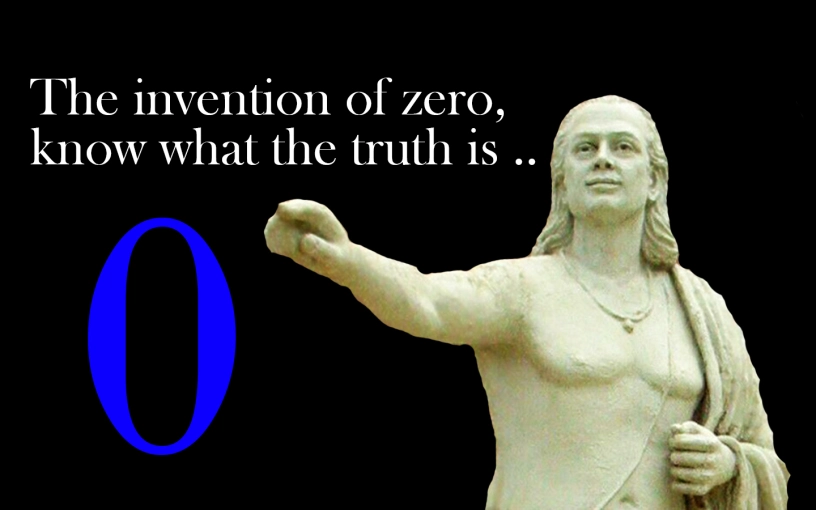The Origin of Zero in India
Development of Zero
Zero, a numeral representing the absence of quantity, emerged in India around the 5th century CE. The concept was first documented in the Bakshali Manuscript, discovered in 1881 near Peshawar. This ancient text, dating to the 3rd or 4th century, showcases numerous instances of zero symbolized by dots, used as placeholders in large numbers such as 101 or 1100.
The Bakshali Manuscript
The Bakshali Manuscript is a critical piece of evidence for the early use of zero. This complex document, with layers of texts from different centuries, has been radiocarbon dated to 224-383 CE, 680-779 CE, and 885-993 CE. The manuscript highlights the early conceptualization of zero as a placeholder rather than a standalone number.
Zero in Other Ancient Cultures
While ancient civilizations like the Babylonians and Mayans used placeholders, they lacked a symbol for zero. The Babylonians used a double wedge, and the Mayans used a shell symbol. However, it was in India where zero was fully developed as both a concept and numeral.
The Gwalior Temple Inscriptions
One of the oldest recorded instances of zero as a numeral is found in a 9th-century inscription at a temple in Gwalior, India. This significant milestone marks zero’s formal integration into the mathematical systems of the time.
Integration into Indian Mathematics
Zero became an integral part of Indian mathematics. Ancient scholars like Pingala, who used binary numbers, referred to zero as ‘śūnya’ (void). In 628 CE, Brahmagupta formalized the concept of zero, developing rules for its mathematical operations. Aryabhata further utilized zero in the decimal system, enhancing its practical applications.

Why This News is Important
Impact on Mathematics
The origin of zero is a monumental event in the history of mathematics. Understanding its development helps appreciate its role in modern mathematical systems and computer science. This knowledge is crucial for students preparing for competitive exams where historical scientific advancements are often tested.
Cultural Significance
Zero’s origin in India underscores the country’s rich heritage in mathematics and science. It reflects the intellectual achievements of ancient Indian scholars, adding to the cultural pride and historical knowledge necessary for civil services examinations.
Historical Context
Early Mathematical Developments
Ancient Indian mathematicians made significant contributions to mathematics long before zero was formalized. The concept of zero evolved over centuries, influenced by various scholarly works and practical needs.
Global Spread of Zero
From India, the concept of zero spread to the Arab world and later to Europe. This global dissemination was crucial for the development of modern mathematics, algebra, and calculus, influencing scientific progress worldwide.
Key Takeaways from “The Origin of Zero in India”
| Serial Number | Key Takeaway |
|---|---|
| 1 | Zero originated in India around the 5th century CE. |
| 2 | The Bakshali Manuscript, discovered in 1881, is one of the earliest documents showing the use of zero. |
| 3 | Ancient Indian mathematician Brahmagupta formalized zero and its mathematical operations. |
| 4 | Zero’s conceptual development in India was pivotal for global mathematical advancements. |
| 5 | The Gwalior temple inscriptions provide one of the oldest recorded examples of zero as a numeral. |
Important FAQs for Students from this News
What is the significance of zero in mathematics?
Zero is crucial in mathematics as it represents the absence of a quantity and serves as a placeholder in the decimal system, enabling the representation of large numbers and performing arithmetic operations.
Where was the earliest documented use of zero found?
The earliest documented use of zero was found in the Bakshali Manuscript, an ancient Indian text dating back to the 3rd or 4th century CE.
Who formalized the concept of zero in mathematics?
The Indian mathematician Brahmagupta formalized the concept of zero and its mathematical operations in 628 CE.
How did the concept of zero spread globally?
The concept of zero spread from India to the Arab world and later to Europe, significantly influencing the development of modern mathematics.
What are some other ancient cultures that used placeholders similar to zero?
The Babylonians used a double wedge, and the Mayans used a shell symbol as placeholders, though they did not have a formal symbol for zero like in India.
Some Important Current Affairs Links

















